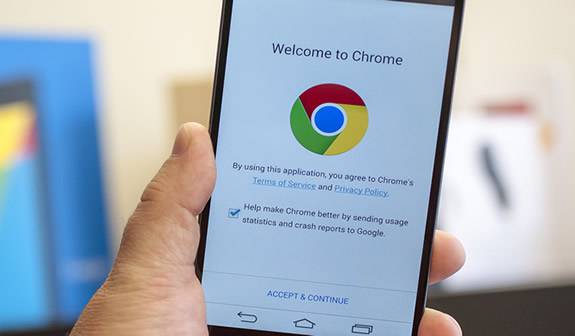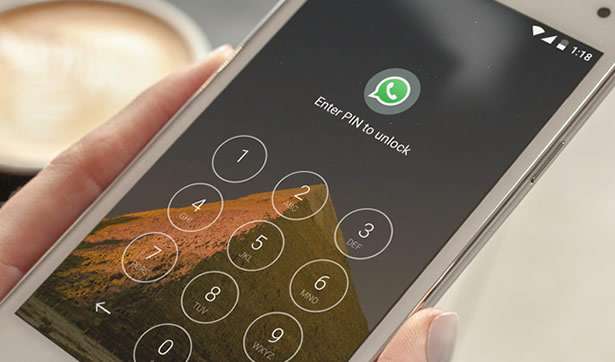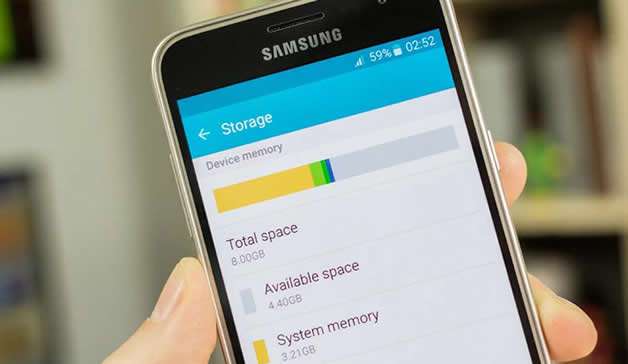To add an Android Studio project to GitHub, you will first need to create a GitHub repository. Then, in Android Studio, go to VCS > Import into Version Control > Share Project on GitHub. Enter the requested information and click OK. Your project will now be added to the specified GitHub repository.
How do I upload an Android Studio project to GitHub?
How do I add a project to GitHub repository?
Assuming you have already created a GitHub repository, you can add a project to the repository in two ways: by using the GitHub web interface, or by using the Git command line.
To add a project to a GitHub repository using the web interface, log into your GitHub account and navigate to the desired repository. In the top-right corner of the screen, click on the “Add file” button. On the next page, click on the “Upload files” button. Select your project file(s) from your computer and click on the “Commit changes” button at the bottom of the page.
To add a project to a GitHub repository using Git, first make sure that you have navigated to your project’s directory in your terminal window. Then, initialize Git in your project by running git init. Add your files to Git by running git add . Finally, commit your changes with git commit -m “message”.
How do I authorize GitHub for Android Studio?
First, you need to generate a personal access token in GitHub. To do this, go to your GitHub settings and select “Developer settings.” Then, select “Personal access tokens” and click the “Generate new token” button. Give your token a name and select the following scopes: repo, user, admin:repo_hook, read:org.
Next, open Android Studio and go to Preferences > Version Control > Git. In the “GitHub” section, paste your personal access token into the “Token” field. Finally, click the “Test Connection” button to verify that everything is set up correctly.
How do I upload a folder to GitHub?
To upload a folder to GitHub, you first need to create a repository. Once you have created a repository, you can click the “Create new file” button in the repository. In the “Name your file” field, enter the name of the folder you want to upload. Make sure to include “/” at the end of the folder name so that GitHub knows it is a folder. After you have entered the folder name, click “Commit new file”. Your folder will then be uploaded to GitHub!
How do I commit to GitHub?
There are a few different ways to commit to GitHub. You can use the GitHub web interface, or you can install and use the GitHub Desktop application. You can also use the command line tool Git to push your changes to GitHub.
To commit using the GitHub web interface, first make sure you are logged in. Then, go to the page for the repository you want to contribute to. In the top right corner of the page, there should be a button labeled “Fork”. Click this button to create your own copy of the repository.
Once you have forked the repository, make the changes you want to contribute and then click on the “Commit changes” button near the top of the page. On this page, you will be able to enter a commit message describing your changes. Once you have entered a commit message, click on “Commit changes” again at the bottom of the page.
If you are using GitHub Desktop, first make sure that you have cloned down your fork of the repository onto your computer. Then, make any changes that you want to contribute and save them in your text editor. To stage these changes for committing, go into GitHub Desktop and click on “Changes”. This will show all ofthe changed files in your project. Select all ofthe changed files that you wantto include in your commit and then click on “CommitStaged”. Inthe window that appearsenter acommit messageandclickon”Commit”. Finally pushyour commitsby clickingon”Push origin” inthe upper-right handcornerofGitHubDesktop .
How do I add a project to GitHub without command line?
The easiest way to add a project to GitHub without using the command line is to use the GitHub Desktop application. With GitHub Desktop, you can easily create and add repositories without having to use the command line. Simply open GitHub Desktop, click on the File menu, and select Add local repository. Then browse to your project folder and click Add.
How do I upload a project to GitHub desktop?
There are a few different ways to add projects to GitHub Desktop:
1. If you’re starting a new project, click the “Create New Repository” button on the Welcome screen and select the directory where your project is located. GitHub Desktop will create a new repository with the contents of that directory.
2. If you’re adding an existing project, click the “Add Existing Repository” button on the Welcome screen or go to File > Add Local Repository and select your project folder.
3. You can also drag and drop projects from Explorer/Finder into GitHub Desktop.
How do I publish my Android library to GitHub?
Before you can publish your Android library to GitHub, you will need to create a GitHub account and repository for your library. Once you have created your account and repository, you can push your library code to GitHub using the Git command line tool. For more information on how to use Git, please see the Git documentation.
How do I connect my app to GitHub?
There are a few different ways to connect your app to GitHub. One way is to use the GitHub API. You can find more information on how to do this here: https://developer.github.com/v3/
Another way is to use a tool like GitKraken. This tool allows you to easily connect your app to GitHub and manage your repositories from one place. You can find more information on how to do this here: https://support.gitkraken.com/connecting-to-repositories/connect-to-github
How do I add a file to Git?
Adding a file to Git is a two-step process. First, you need to add the file to the “staging area” using the “git add” command. Second, you need to commit the file to your local repository using the “git commit” command.
How do I add a project to my existing Git repository?
If you’re using Git from the command line, you can run the “git add” command to add a project to your repository. This will add all of the files in your project to the Git index, which will prepare them to be committed.
What is the difference between push and commit?
Pushing is how you transfer commits from your local repository to a remote repository. This is most commonly done via git push, which transfers commits from the current branch of your local repository to a matching branch on the remote.
Committing, on the other hand, just means storing changes locally. When you commit, you’re taking a snapshot of your project at that point in time and saving it in your local repository.
What is git commit used for?
Git commit is used to save changes made to a git repository. When you perform a git commit, you are creating a new snapshot of your codebase that can be referenced at a later time. Git commit is often used in conjunction with git push, which allows you to share your snapshots with others.
What is git add command?
The “git add” command is used to add new or modified files to the staging area. This means that they will be included in the next commit. You can use the “git add” command with a specific file, or with a directory:
git add
git add
Adding a directory will add all of the files in that directory (and any subdirectories).
{“@context”:”https://schema.org”,”@type”:”FAQPage”,”mainEntity”:[{“@type”:”Question”,”name”:”How do I add a project to GitHub repository?”,”acceptedAnswer”:{“@type”:”Answer”,”text”:”nnAssuming you have already created a GitHub repository, you can add a project to the repository in two ways: by using the GitHub web interface, or by using the Git command line.nnTo add a project to a GitHub repository using the web interface, log into your GitHub account and navigate to the desired repository. In the top-right corner of the screen, click on the “Add file” button. On the next page, click on the “Upload files” button. Select your project file(s) from your computer and click on the “Commit changes” button at the bottom of the page.nnTo add a project to a GitHub repository using Git, first make sure that you have navigated to your project’s directory in your terminal window. Then, initialize Git in your project by running git init. Add your files to Git by running git add . Finally, commit your changes with git commit -m “message”.”}},{“@type”:”Question”,”name”:”How do I authorize GitHub for Android Studio?”,”acceptedAnswer”:{“@type”:”Answer”,”text”:”nnFirst, you need to generate a personal access token in GitHub. To do this, go to your GitHub settings and select “Developer settings.” Then, select “Personal access tokens” and click the “Generate new token” button. Give your token a name and select the following scopes: repo, user, admin:repo_hook, read:org.nnNext, open Android Studio and go to Preferences > Version Control > Git. In the “GitHub” section, paste your personal access token into the “Token” field. Finally, click the “Test Connection” button to verify that everything is set up correctly.”}},{“@type”:”Question”,”name”:”How do I upload a folder to GitHub?”,”acceptedAnswer”:{“@type”:”Answer”,”text”:”nnTo upload a folder to GitHub, you first need to create a repository. Once you have created a repository, you can click the “Create new file” button in the repository. In the “Name your file” field, enter the name of the folder you want to upload. Make sure to include “/” at the end of the folder name so that GitHub knows it is a folder. After you have entered the folder name, click “Commit new file”. Your folder will then be uploaded to GitHub!”}},{“@type”:”Question”,”name”:”How do I commit to GitHub?”,”acceptedAnswer”:{“@type”:”Answer”,”text”:”nnThere are a few different ways to commit to GitHub. You can use the GitHub web interface, or you can install and use the GitHub Desktop application. You can also use the command line tool Git to push your changes to GitHub.nnTo commit using the GitHub web interface, first make sure you are logged in. Then, go to the page for the repository you want to contribute to. In the top right corner of the page, there should be a button labeled “Fork”. Click this button to create your own copy of the repository.nnOnce you have forked the repository, make the changes you want to contribute and then click on the “Commit changes” button near the top of the page. On this page, you will be able to enter a commit message describing your changes. Once you have entered a commit message, click on “Commit changes” again at the bottom of the page.nnIf you are using GitHub Desktop, first make sure that you have cloned down your fork of the repository onto your computer. Then, make any changes that you want to contribute and save them in your text editor. To stage these changes for committing, go into GitHub Desktop and click on “Changes”. This will show all ofthe changed files in your project. Select all ofthe changed files that you wantto include in your commit and then click on “CommitStaged”. Inthe window that appearsenter acommit messageandclickon”Commit”. Finally pushyour commitsby clickingon”Push origin” inthe upper-right handcornerofGitHubDesktop .”}},{“@type”:”Question”,”name”:”How do I add a project to GitHub without command line?”,”acceptedAnswer”:{“@type”:”Answer”,”text”:”nnThe easiest way to add a project to GitHub without using the command line is to use the GitHub Desktop application. With GitHub Desktop, you can easily create and add repositories without having to use the command line. Simply open GitHub Desktop, click on the File menu, and select Add local repository. Then browse to your project folder and click Add.”}},{“@type”:”Question”,”name”:”How do I upload a project to GitHub desktop?”,”acceptedAnswer”:{“@type”:”Answer”,”text”:”nnThere are a few different ways to add projects to GitHub Desktop:nn1. If you’re starting a new project, click the “Create New Repository” button on the Welcome screen and select the directory where your project is located. GitHub Desktop will create a new repository with the contents of that directory.n2. If you’re adding an existing project, click the “Add Existing Repository” button on the Welcome screen or go to File > Add Local Repository and select your project folder.n3. You can also drag and drop projects from Explorer/Finder into GitHub Desktop.”}},{“@type”:”Question”,”name”:”How do I publish my Android library to GitHub?”,”acceptedAnswer”:{“@type”:”Answer”,”text”:”nnBefore you can publish your Android library to GitHub, you will need to create a GitHub account and repository for your library. Once you have created your account and repository, you can push your library code to GitHub using the Git command line tool. For more information on how to use Git, please see the Git documentation.”}},{“@type”:”Question”,”name”:”How do I connect my app to GitHub?”,”acceptedAnswer”:{“@type”:”Answer”,”text”:”nnThere are a few different ways to connect your app to GitHub. One way is to use the GitHub API. You can find more information on how to do this here: https://developer.github.com/v3/nnAnother way is to use a tool like GitKraken. This tool allows you to easily connect your app to GitHub and manage your repositories from one place. You can find more information on how to do this here: https://support.gitkraken.com/connecting-to-repositories/connect-to-github”}},{“@type”:”Question”,”name”:”How do I add a file to Git?”,”acceptedAnswer”:{“@type”:”Answer”,”text”:”nnAdding a file to Git is a two-step process. First, you need to add the file to the “staging area” using the “git add” command. Second, you need to commit the file to your local repository using the “git commit” command.”}},{“@type”:”Question”,”name”:”How do I add a project to my existing Git repository?”,”acceptedAnswer”:{“@type”:”Answer”,”text”:”nnIf you’re using Git from the command line, you can run the “git add” command to add a project to your repository. This will add all of the files in your project to the Git index, which will prepare them to be committed.”}},{“@type”:”Question”,”name”:”What is the difference between push and commit?”,”acceptedAnswer”:{“@type”:”Answer”,”text”:”nnPushing is how you transfer commits from your local repository to a remote repository. This is most commonly done via git push, which transfers commits from the current branch of your local repository to a matching branch on the remote. nnCommitting, on the other hand, just means storing changes locally. When you commit, you’re taking a snapshot of your project at that point in time and saving it in your local repository.”}},{“@type”:”Question”,”name”:”What is git commit used for?”,”acceptedAnswer”:{“@type”:”Answer”,”text”:”nnGit commit is used to save changes made to a git repository. When you perform a git commit, you are creating a new snapshot of your codebase that can be referenced at a later time. Git commit is often used in conjunction with git push, which allows you to share your snapshots with others.”}},{“@type”:”Question”,”name”:”What is git add command?”,”acceptedAnswer”:{“@type”:”Answer”,”text”:”nnThe “git add” command is used to add new or modified files to the staging area. This means that they will be included in the next commit. You can use the “git add” command with a specific file, or with a directory:nngit add ngit add nnAdding a directory will add all of the files in that directory (and any subdirectories).”}}]}







